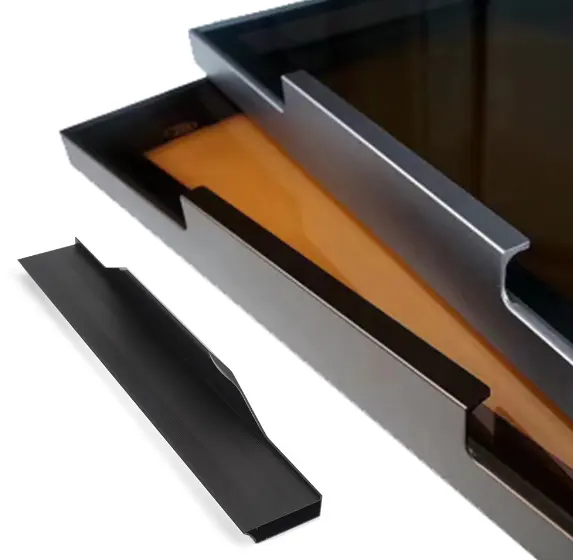Aluminum is often associated with things like kitchen foil and beverage cans-maybe leading one to think it has little strength. However, that perception sells its true character short. In fact, aluminum becomes really strong when alloyed with other elements and hence finds applications in many industries. The power of aluminum alloys and how they compare to materials such as steel to demonstrate how these alloys can give a unique blend of strength and lightweight properties will be discussed in this blog post.

Introduction: The Misconception of Aluminum
Aluminum often carries the reputation of being lightweight but not necessarily strong. This perception stems from its widespread use in products like beverage cans and foil, where flexibility is key. However, when combined with other elements and carefully processed, aluminum alloys emerge as materials that are both durable and robust.
Aluminum’s Everyday Presence
The importance of aluminum in your routines is probably more than you imagine with its presence felt within a variety of areas. Be it household gadgets, vehicles or even the frameworks of towering buildings, aluminum proves to be a versatile material that’s frequently undervalued. You may be surprised to know how aluminum has become a fundamental element in industries where resistance, durability and weight are a matter of great importance. The versatility of the metal makes it perfect for use in everything from simple tools to complex machinery.
Defining Strength in Materials
To appreciate the strength of aluminum alloys, you need to understand how strength is measured. Terms such as “yield strength” and “ultimate strength” give insight into a material’s behavior under stress.
Yield Strength vs. Ultimate Strength
Before measuring the strength of a material in terms of engineering, it becomes important to understand what “strength” implies. Basically, when referring to a material, “strength” denotes its capability to bear a load or stress without failing by deforming or fracturing under strain. There are metrics that quantify strength characteristics, including yield strength, which is the amount of stress a material can resist without showing permanent deformation, while ultimate strength is the maximum amount of stress that a material can withstand without failing or rupturing. Think about a rubber band: it stretches when you pull it, but returns to its normal shape when you let the force off (if you haven’t stretched it beyond its breaking point). It breaks if you pull on it with too much force (beyond its tensile strength).
How Different Forces Affect Strength Measurements
In the testing of material strength, everything is about the mode of application of force as this aspect can greatly alter the results. The general usages involve the application of tensile force that pulls the material in order to determine the ultimate tensile strength of the material under study. These methods are popular for material strength level comparisons. However, let’s not forget that materials can equally be subjected to tests such as compression tests or torsional tests that assess their strengths differently. In understanding these forces, valuable insight is gained into choosing materials for particular design needs.
The Strength of Aluminum Alloys
Modern aluminum alloys boast strength-to-weight ratios competitive in some applications with traditional materials such as steel.
Not All Aluminum is Created Equal: The Impact of Alloying Elements
Pure aluminum is a soft, ductile metal, the addition of other elements produces strong aluminum alloys with a wide range of properties and strengths, depending upon the type and proportion of element added within the melting process. The series that are alloyed with specific metals include, but are not limited to: 2xxx series alloyed with copper and the 7xxx series alloyed with zinc are famous for their strength properties. Where 3xxx series alloyed with manganese and 5xxx series alloyed with magnesium are known to contain properties like resistance to corrosion and weld ability.
Comparison of Aluminum Alloys with Steel: It’s Not a Single-Corner Fight
The general perception is that steel will always be stronger than aluminum. Although the strength-by-volume is often higher for steel compared to aluminum, this does not reveal the complete picture. For example, the ultimate tensile strength of the aluminum alloy AA7068-T6 is 710 MPa, while the tensile strength of the steel alloy AISI 1080 is 965 MPa. However, when weight is brought into the equation, the picture starts to change.
Strength-to-Weight Ratio: Where Aluminum Gets an Edge
Its strength-to-weight ratio places it ahead in competition with steel for substitution in some conditions by offering equal or sometimes even better strength at the same weight level compared to its steel counterparts. The carbon footprint of the aluminum alloy is about a third of the ones stemming from steel, making them easier to handle for transportation and handling convenience while providing strong support in various structures. This is the reason the automotive industry is resorting to aluminum in order to reduce vehicle weight and improve fuel economy.
Improving the Strength of Aluminum Through Processing
The strength of the alloy is not only a function of the composition but also of the treatment the alloy has undergone. Hot rolling and cold rolling are methods that increase the strength of the alloy by changing its structure. Heat treatment and quick cooling also increase strength by making the movement of atoms difficult at the atomic level. These techniques allow for the tailoring of aluminum to performance requirements.
High-Strength Applications of Aluminum Alloys
Thanks to their versatile properties, aluminum alloys are found in high-performance applications across numerous sectors.
Aerospace and Automotive Industries
Aluminum alloys are used in highly demanding applications, such as aircraft manufacture in types like 7075. Many of these products also go by the name “aircraft aluminum” due to the high strength and resistance to corrosion for important structural parts. Applications in the automotive sector include alloying to reduce overall vehicle weight while preserving strength.
Architectural Wonders
Aluminum extrusions find their applications in construction and architecture owing to their strength, resistance to corrosion and flexibility in design. This makes the construction of great and wonderful buildings easy to achieve. In building curtain walls, window frames and roofing materials, aluminum is commonly used today. This again exemplifies its value as a choice for modern architecture projects.
Consumer Products and Beyond
Extruded aluminum is widely used in a variety of consumer products because of its good thermal and electrical conductivity. Products for which such materials are used include heat sinks, electrical housings and wiring. Again, the use of aluminum can be found in camping chairs, sports equipment, kitchen utensils and furniture due to their flexibility and economy, making it an excellent choice for consumers in different applications.
XiHui Aluminum: Your Reliable Partner in Aluminum Alloys
If you’re seeking a partner who can satisfy all your requirements with regard to aluminum alloy, then you may consider approaching XiHui Aluminium Co., Ltd. With immense three decades of experience in this field, XiHui specializes in aluminum extrusion profile processing and holds a reputation in the production of thin materials. It has 15 extrusion lines in its manufacturing plant, with additional surface treatments like anodizing and powder coating. They offer not only different shapes and sizes of aluminum profiles for doors and windows, kitchen cabinets, architectural and industrial applications, but also tailored products such as design services and production, while packaging and logistics support is part of the products they provide. Their huge variety of molds already available supports clients in over 120 countries, making them a fitting partner for your project at this moment.

FAQs
1. Is aluminum alloy stronger than pure aluminum?
Well, pure aluminum is way weaker compared to the aluminum alloy because of elements such as copper, magnesium and zinc added in aluminum alloys that enhance their strength and durability.
2. How can the strength of aluminum alloys be increased?
By such processing as hot or cold rolling or heat treatment by changes to the internal atomic structure and composition.
3. Why use aluminium alloy over aluminium in any application?
By alloying, it improves the mechanical strength and resistance of Aluminium to corrosion at the same time allows for new avenues of applications structurally sound and under highly stressed conditions.





